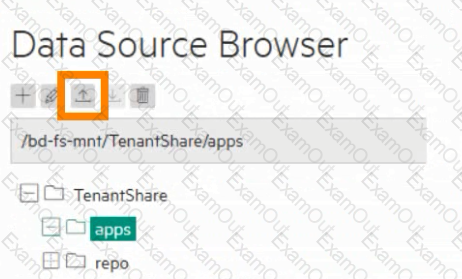Refer to the exhibit.

You are logged in as a Tenant Admin named "admin 1." You have uploaded a file into the location shown In the exhibit. Now you want to apply that tile from the Web Terminal. How do you obtain access to the file in the Web Terminal?
What Is a correct consideration for creating a Kubernetes Tenant on Ezmeral Container Platform?
A Tenant Member plans to use KubeDirettor to deploy a Spark 2.4.5 cluster. You need to give cluster members access to data stored in a volume In Ezmeral Data Fabric. What are two required steps?
You have added a deployment object to the "tenant!" namespaces on a Kubetnetes cluster using the "cluster.local" domain name.
The deployment's pods run a Web-based application. You want the application running on these pods to be accessible within the cluster at hostname:
portaLtenantl.svc.clusteUocal.
Which object meets these requirements?
A company IT department has strict requirements around data protection and wants you to explain how to use the Max Target and Mm Target options for an HPE Ezmeral Data Fabric volume.
What should you explain?
The Max Target sets the desired RAID level for data In the primary volume. The Mm Target sets the desired RAID level for data In associated mirror and snapshot volumes.
What Is the purpose of the training stage in the ML lifecycle?
For which use case should you enable Istlo on a Kubernetes cluster?
How are resources allocated to EPIC virtual nodes?
What is an advantage of HPE Ezmerai Container Platform as compared to engineered Kubernetes distributions such as Red Hat OpenShift?
Which correctly describes components of the Hadoop framework?

